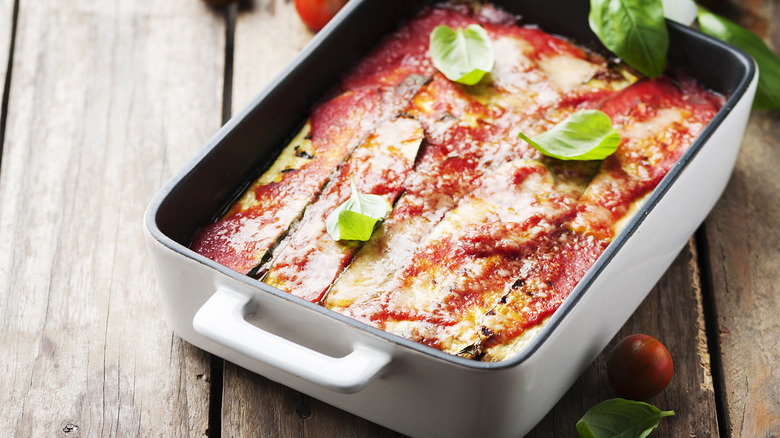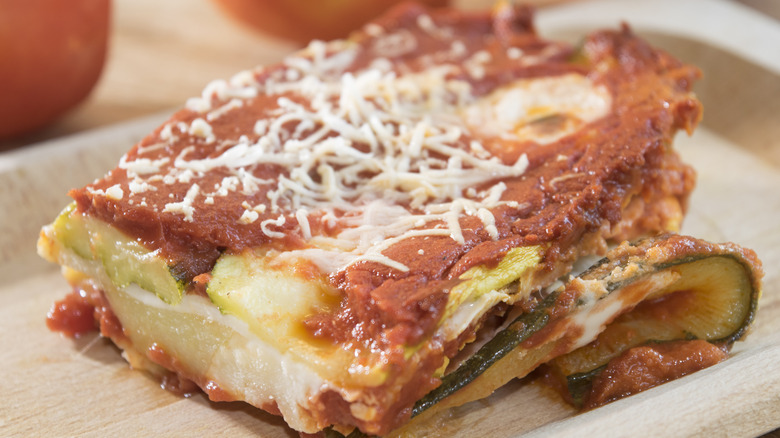Zucchini Parmesan Is A Classic Neapolitan Casserole
Whether you call it zucchini parmesan, parm, or parmigiana isn't important. What is important is knowing how to make this delicious Neapolitan casserole. Cheesy and saucy, zucchini parmesan may require a bit of effort, but the final product is more than worth it. Like a courgette-layered lasagna, MasterClass explains that the recipe originated in the southern Italian city of Naples, where local ingredients like the zucchini shine.
Tracing the history of the parmigiana is tricky, to say the least. While it's believed that eggplant was brought to southern Italy in the 15th century, Gambero Rosso reports that a sauce and aubergine layered recipe may have been crafted in Sicily but refined in Naples, where it was instead made with a copious amount of mozzarella and fried zucchini in place of the eggplant.
As for the parmigiana moniker, Paesana proposes several theories like how it could be derived from the Sicilian word damigiana (the wicker sleeve used to serve the casserole) or the word palmigiana (the horizontal slats on a roof that resemble the layered vegetables) — it might even have something to do with its generous use of parmigiano reggiano.
Fried zucchini, simmering sauce, and a whole lot of parmesan
Like many Neapolitan recipes, zucchini parmesan starts with whipping up a simple marinara sauce of sautéed chili, garlic, basil, and crushed tomatoes, leaving that to simmer. Next, zucchini is sliced and salted, so they do not turn out soggy – and then coated in eggs and breadcrumbs before being shallowly fried, notes Serious Eats. Now comes the fun part: assembly. Layer sauce at the bottom of a baking dish, followed by fried zucchini, mozzarella, and a handful of parmesan, repeating until the zucchini is finished. Top with sauce (and more cheese) and bake until bubbly.
Like all good recipes, there are some riffs on zucchini parm. According to La Cucina Italiana, some recipes forgo the breading and just fry the zucchini, whereas other renditions skip the frying entirely and bake or grill the courgettes. Other times tomato sauce is swapped out for a creamy béchamel, or other ingredients like pesto, ricotta, or a bit of meat are added between layers. Parmigiana is very much a recipe with flexibility.
A word to the wise, when it comes to serving, let the casserole rest before slicing to avoid a mess of mozzarella. Enjoyed as an antipasto or as a main course, zucchini parm is sure to delight, especially when paired with the right glass of vino. As the saying goes per food consultant Joyce Goldstein: "What grows together, goes together," which is why Wine Enthusiast recommends pairing the rich dish with a crisp white wine like a Pallagrello Bianco.

